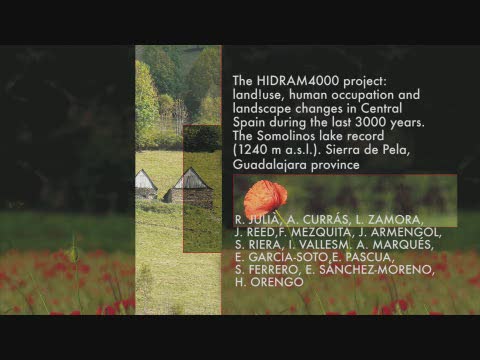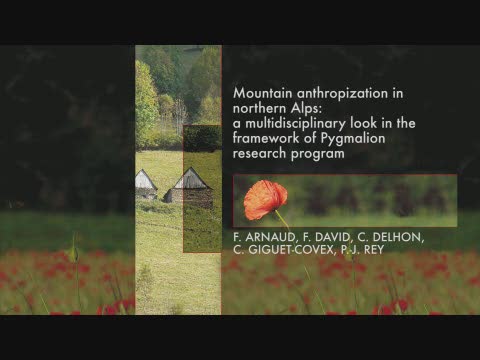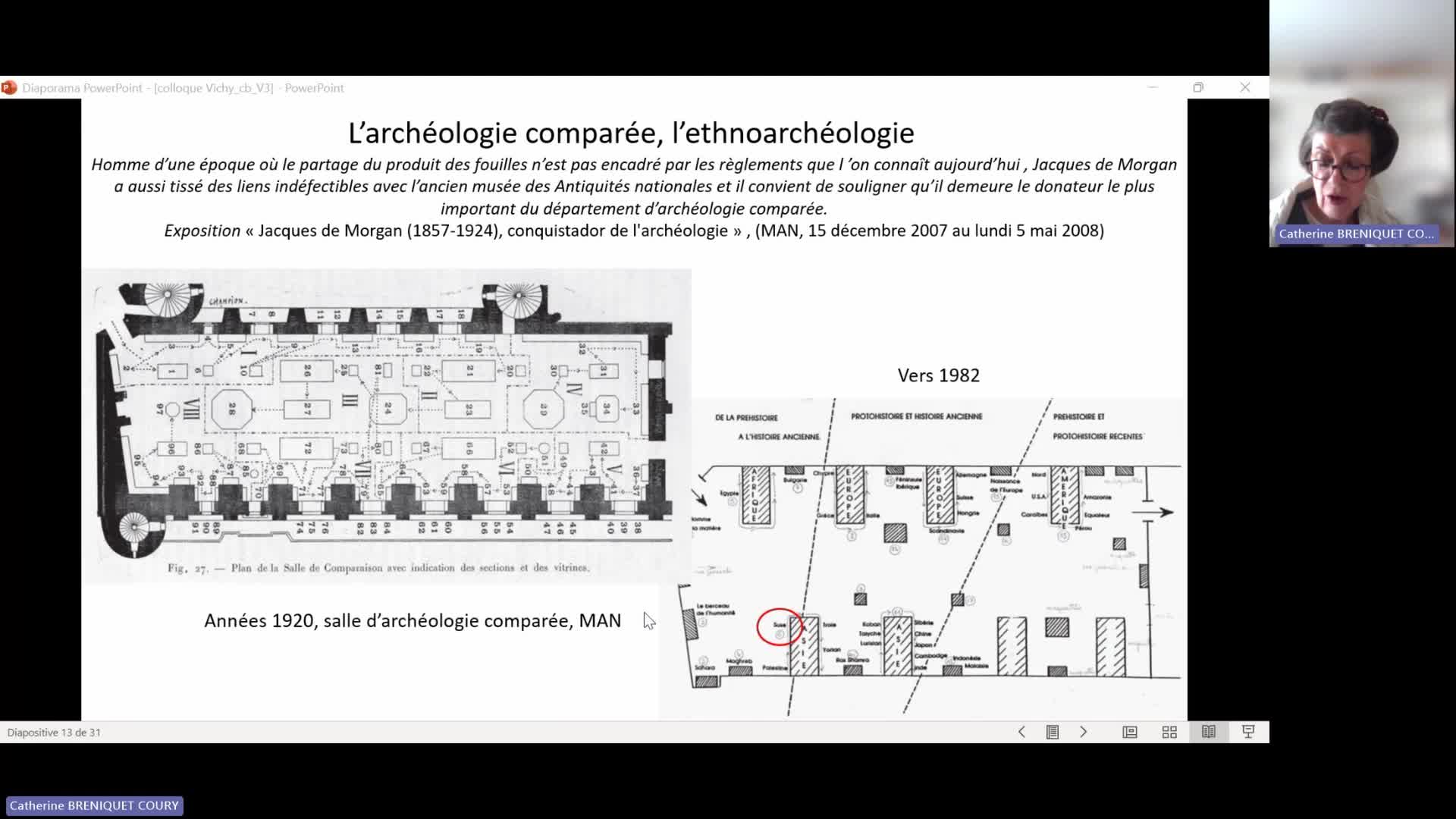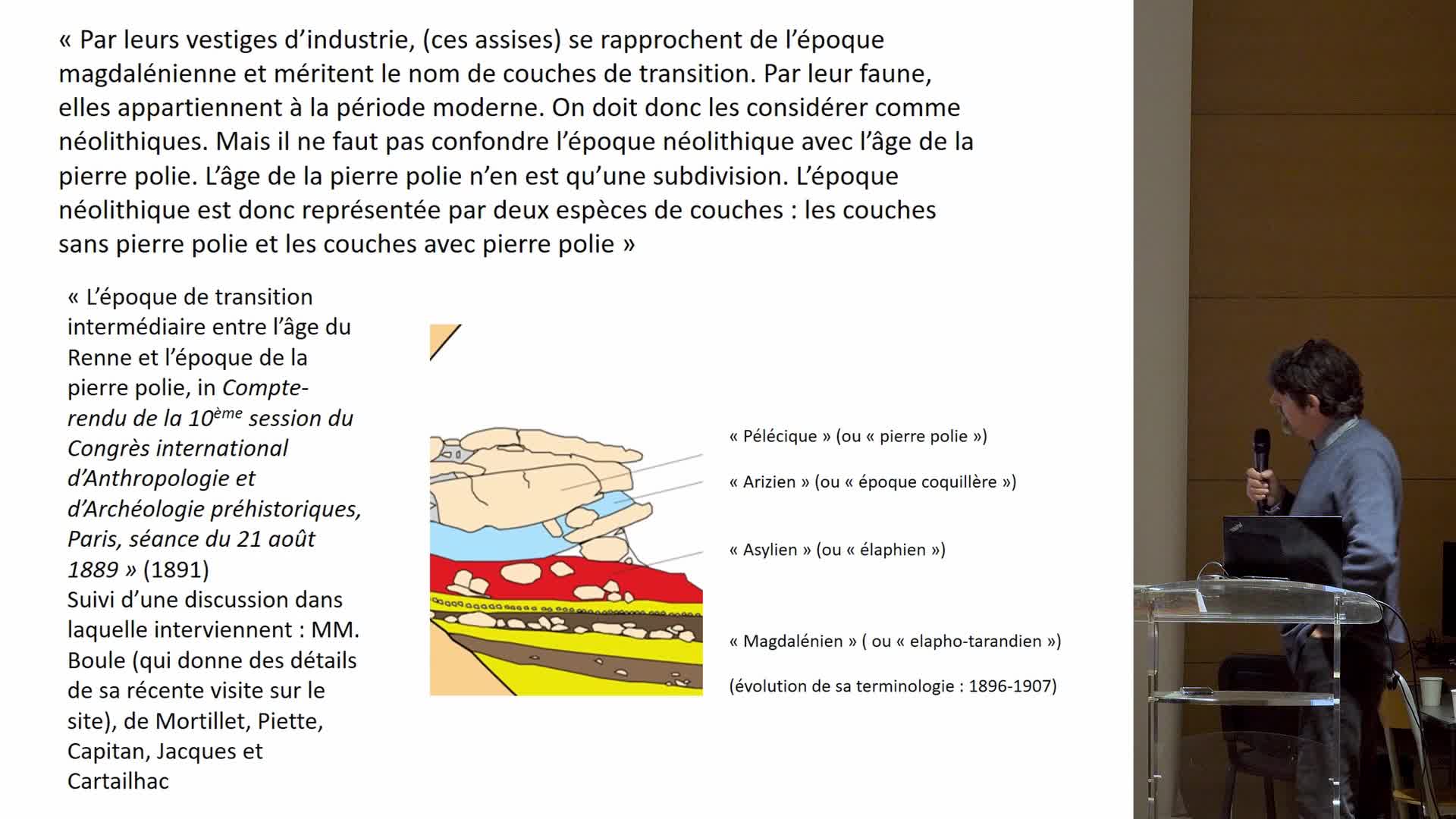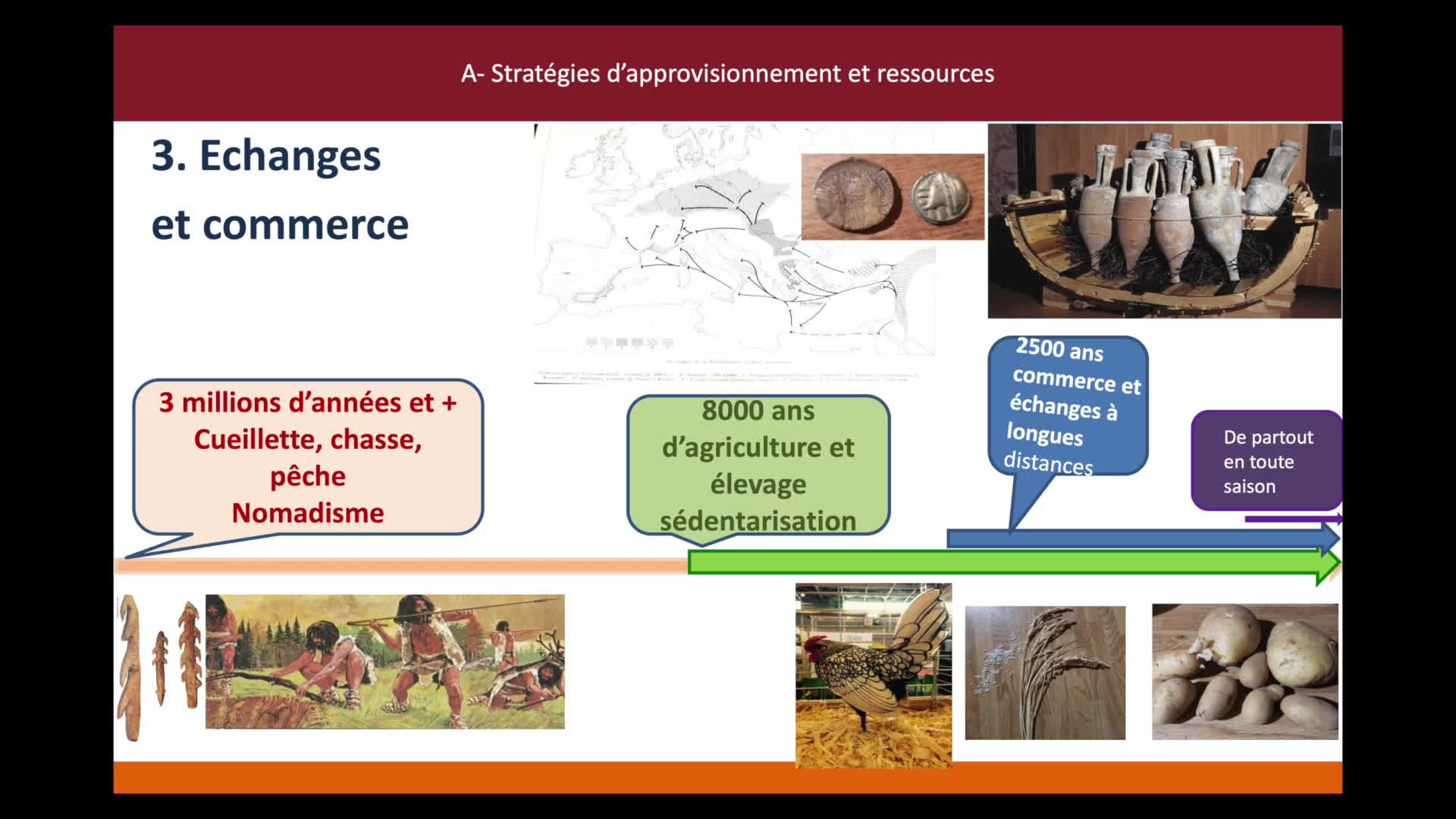Notice
Human environmental interactions in high altitude zone between Neolithic and roman period / K. Walsh
- document 1 document 2 document 3
- niveau 1 niveau 2 niveau 3
Descriptif
A History of Transitions : human environmental interactions in the high altitude zone between Neolithic and roman period. Kevin WALSH. In "La construction des territoires montagnards : exploitation des ressources et mobilité des pratiques", 2e International Workshop on archaeology of european mountain landscape, organisé par les laboratoires GEODE, FRAMESPA, GEOLAB et Chrono-Environnement. Université Toulouse 2-Le Mirail, 8-11 octobre 2009. [seconde journée]
Understandably, archaeologists tend to characterise cultures, and the transitions between cultures via an assessment of material culture. It is the ceramic material, the flint and other objects, along with evidence for buildings and monuments that provide the foundations for the definition of chronology and the investigation of certain types of economic practice. Since the 1960s, scientific archaeology, in particular the study of past environments and evidence for the exploitation of plants and animals, has made an important contribution to these discussions. However, more often than not, the assessment of transitions is still one founded on the study of artefacts and the associated chronologies rather than one that also considers changes in cultural ecology. A cultural ecological approach must underlie the study of milieus where there is a dearth of material evidence, such as in the Alpine zone. Here, the premise is that each society’s engagement with the environment is culturally specific; consequently, if we can elucidate the manner in which past peoples manipulated and responded to their milieus, then this is an effective hermeneutic for the investigation of past cultures and the transitions or changes in culture across a given landscape.This contribution will consider two important “transitions”; first, the Neolithic-Bronze Age transition; the second, the Iron-age Roman transition. This discussion will interpret palaeoenvironmental and archaeological evidence from the Ecrins and the Ubaye Valley in the southern French Alps. This first “transition” comprises the third and second millennia BC. The early part of this period saw the continued use of this landscape as a hunting zone, as represented by lithic scatters, with pastoralism concentrated towards the lower altitudes. From c. 2500 BC onwards, there was a fundamental change in the use of and engagement with this landscape. The appearance of the first substantial pastoral structures at high altitude (2000m and above) made from stone appear at this time. This first section, that deals with the Late Neolithic and Bronze Age will consider the archaeological and palaeoecological evidence within a framework that assesses the evidence for so-called “cultures” that were present in this region, and assess the difficulties of identifying these so-called archaeological cultures. The archaeological and palaeoenvironmental evidence for pastoralism and probable manipulations of the forest environment will be assessed. We will then consider the Iron Age to Roman transition. Here a far greater range of archaeological evidence allows us to present a more sophisticated assessment of alpine cultures than for the preceding prehistoric periods. However, archaeologists rarely consider how attitudes towards the environment changed during these periods. Despite palynological signals that imply continued human impact on these landscapes during the first millennia BC, and into the Roman period, there is a relative absence of archaeological sites in the high altitude zone. There is however a radical reconfiguration of the valley bottoms with the development of towns and associated route ways. For the Iron Age, this may well have been due to climatic deterioration, although we must also consider the importance of changing cultural perceptions of the mountains. The presence of cultic sites, such as the burnt mound at Les Sagnes, is indicative of a complex pattern of different uses the high altitude zone during this period. For the Roman Period, a continued absence of activity in the high altitude zones is implied by the archaeological evidence. However, some of the environmental evidence indicates pastoral activity. Here we must consider how the archaeological, environmental and historical evidence intersect with one another. It is important to consider Roman attitudes to the mountains and how these may have influenced the ways in which people lived at worked in the Alps. At one level, Rome may have adapted existing agricultural systems, and the relative absence of Roman sites at high altitude might be a continuation of Iron Age system.
This part of the communication will consider the archaeological and environmental evidence for these periods and will develop a cultural ecological assessment for these periods.
Intervention / Responsable scientifique
Dans la même collection
-
La construction des territoires montagnards : exploitation des ressources et mobilité des pratiques…
GalopDidierThe occupation and the exploitation of mountain environments, both during conquest and maximum demographic phases, or on the contrary, during desertification phases, differ in geographical
-
L'agro-pastoralisme en milieu montagnard : l'apport des sépultures saisonnières / Patrice Courtaud
CourtaudPatriceL'agro-pastoralisme en milieu montagnard : l'apport des sépultures saisonnières. Patrice COURTAUD. In "La construction des territoires montagnards : exploitation des ressources et mobilité des
-
Prehistory of the Southern Appalachian uplands of Tennessee / Jay Franklin
FranklinJay D.Prehistory of the Southern Appalachian uplands of Tennessee. Jay FRANKLIN. In "La construction des territoires montagnards : exploitation des ressources et mobilité des pratiques", 2e International
-
L'évolution végétale holocène sur le versant sud des Pyrénées occidentales / Maria-José Iriarte
IriarteMaría JoséL'évolution végétale holocène sur le versant sud des Pyrénées occidentales. Maria José IRIARTE. In "La construction des territoires montagnards : exploitation des ressources et mobilité des pratiques"
-
A cultural landscape research in a mediterranean mountain (Barcelona-Girona) / A. Garcia Molsosa
Garcia MolsosaArnauA cultural landscape research in a mediterranean mountain area : the "Massis del Montseny project" (Barcelona-Girona) / A. GARCIA MOLSOSA. In "La construction des territoires montagnards :
-
The Hidram4000 project : land use, human occupation and lanscape changes in Spain / A. Curras
Currás DominguezAndresThe Hidram4000 project : land use, human occupation and lanscape changes in Spain during the last 3000 years. The Somolinos lake record (1240 M A.S.L.) : Siera de Pela, Guadalajara Province. Andres
-
Mountain anthropization in Alps : a multidisciplinary look in the Pygmalion program / F. Arnaud
ArnaudFabienMountain anthropization in Alps : a multidisciplinary look in the framework of Pygmalion research program. Fabien ARNAUD. In "La construction des territoires montagnards : exploitation des ressources
-
Exploitation of natural vegetal resources in chalcolithic areni-1 cave (Armenia) / R. Hovsepyan
HovsepyanRomanExploitation of natural vegetal resources in chalcolithic areni-1 cave settlement (Armenia). Roman HOVSEPYAN ovsepyan, Roman. In "La construction des territoires montagnards : exploitation des
-
Territorial practices, landscape dynamics and mobilities in a french mountain / P. Allée, Y. MIras
AlléePhilippeMirasYannickTerritorial practices, landscape dynamics and spatio-temporal mobilities in a french medium mountain : integrated approach combining archaeological and paleoecological inverstigations performed in the
-
Wildfires in european alps : frequent yesterday, rare today, frequent tomorrow ? / W. Finsinger
FinsingerWalterWildfires in european alps : frequent yesterday, rare today, frequent tomorrow ?. Walter Finsinger. In "La construction des territoires montagnards : exploitation des ressources et mobilité des
-
Exploitation des vallées andorranes depuis le Néolithique/ J.-M. Palet Martinez, H. Orengo Romeu
Palet i MartínezJosep M.Orengo RomeuHèctor A.L'exploitation des ressources des vallées andorranes du Madriu-Perafita-Claror et de la chaîne du Cadi (Pyrénées orientales) depuis le Néolithique à partir des données archéologiques et
-
Exemple de l'occupation de l'espace dans la montagne corse au bas Moyen Age: peuplement et économie…
TomasÉmilieExemple de l'occupation de l'espace dans la montagne corse au bas Moyen Age: peuplement et économie dans la Pieve de Rostino. Émilie TOMAS. In "La construction des territoires montagnards :
Sur le même thème
-
Entretien avec Danielle Stordeur
StordeurDanielleDanielle Stordeur est préhistorienne, directrice de recherche émérite au CNRS, spécialisée dans la néolithisation du Proche-Orient. Elle témoigne de son arrivée à Jalès et de son travail au sein de l
-
Entretien avec Frédéric Abbès
AbbèsFrédéricFrédéric Abbès, ingénieur de recherche au CNRS spécialiste des technologies lithiques néolithiques raconte son arrivée à Jalès, en Ardèche, au sein de l'équipe pluridisciplinaire montée par l
-
Entretien avec Yann Callot
CallotYannYann Callot, Professeur émérite de Géographie, évoque son arrivée et son travail à la commanderie de Jalès, les collaborations scientifiques et l’ancrage territorial du site de Jalès.
-
Entretien avec Emmanuelle Vila
VilaEmmanuelleEmmanuelle Vila, directrice de recherche au CNRS et archéozoologue revient sur son arrivée à Jalès et sur la place de l’archéozoologie au sein de l’équipe pluridisciplinaire réunie par Jacques Cauvin
-
GLAMCE - Dater les paysages glaciaires du Forez : combinaison d’une technique low-tech (Marteau de …
RousselErwanAncrenazArthurArthur Ancrenaz et Erwan Roussel, membres de GEOLAB, présentent le projet GLAMCE.
-
Glozel-Session 2 : Table ronde conclusive
AngevinRaphaëlBonFrançoisGilabertChristopheGernigonKarimZurbachJulienTable ronde conclusive de la session n°2 - Glozel et la Préhistoire : construction(s) intellectuelle(s) et institutionnelle(s) - du colloque Glozel dans l’histoire de l’archéologie française : sources
-
Genèse et apories de la Préhistoire récente au Proche-Orient
BreniquetCatherineCatherine Breniquet revient sur les enjeux de la naissance de la préhistoire récente du Proche-Orient.
-
Le « Mirage oriental » de Salomon Reinach et la question primordiale de l’origine de la civilisatio…
GernigonKarimDès la publication du premier fascicule relatant ses fouilles de Glozel avec Fradin (1925), Morlet fait référence à l'article « Le Mirage oriental » publié par Salomon Reinach en 1893 dans L
-
L’archéologie néolithique à la fin du XIXe et au début du XXe siècle : entre construction scientifi…
GilabertChristopheÀ la fin du XIXe et au début du XXe siècle, la question du Néolithique est encore fortement liée à une vision évolutionniste de l’apparition de la « civilisation » en Europe et sur le pourtour
-
Glozel ou le « trompe-l’œil » d’une nouvelle résolution du hiatus entre Paléolithique et Néolithique
BonFrançoisFrançois Bon s'intéresse à la manière dont s'est difficilement opérée la reconnaissance d'une période de transition entre le Paléolithique et le Néolithique...
-
Les grandes étapes de l’alimentation, du Paléolithique à l’époque gauloise
FlouestAnneAnne Flouest, géologue et docteure en paléoclimatologie, revient sur l’étonnante évolution des usages alimentaires du Paléolithique à l’époque gauloise.
-
Approvisionner le feu en bois. Regard anthracologique sur l’exploitation du Bois des Lens et les us…
VaschaldeChristopheChardonneau-HenneuseJulienApprovisionner le feu en bois. Regard anthracologique sur l’exploitation du Bois des Lens et les usages du combustible par les potiers de l’Antiquité tardive.







